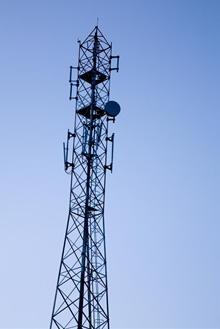 Indus Telecom Towers and Bharti Infratel together constitute 38% of the total tower portfolio in India.
Indus Telecom Towers and Bharti Infratel together constitute 38% of the total tower portfolio in India.
Telecom Tower Tenancy & Demand
Bharti Infratel suggests that a vast majority of its tower have two tenants. c40% of BIL’s towers have single tenant. Management highlights that the company has one of the best quality tenants. BIL’s top three customers contribute to 85% of its revenues and tenancies. The company also suggests that the top three customers have more loading. Bharti Infratel is not building new towers for Reliance Jio (RJio), which typically comes in only as the second or third tenant on their towers. RJio has started impacting BIL’s financials only in the last two quarters.
Management suggests that further growth potential exists for voice in India, in both rural and urban markets (only 40% rural penetration in voice). This is likely to drive tower and co-location demand. However data volume growth will require a lot more new tower demand. BIL reiterated that the significant investments made by operators in spectrum during the past few years, is likely to drive rollouts in the coming quarters. BIL pointed out that operators are rolling out their networks, citing Airtel 4G roll-out in 15 cities and Idea’s 39% yoy growth in 3G cell sites as examples. The top three operators and Reliance Jio are rolling out network.
Management indicated that the tower sector is ripe for consolidation, and that it is keen to acquire Vodafone and Idea towers, which are a good fit to its existing tower portfolio. BIL would be interested in Bharti Airtel towers in Bangladesh and Sri Lanka (pending regulatory issues). 35% of the tower portfolio is enabled for 3G. The company believes that 3G will be the dominant technology for data growth in India for the next 4-5 years [If they are Right, we should see lot of demand for 2100 MHz spectrum in the Feb 2015 Auction]. India may lag the developed world on 4G by 4-5 years.